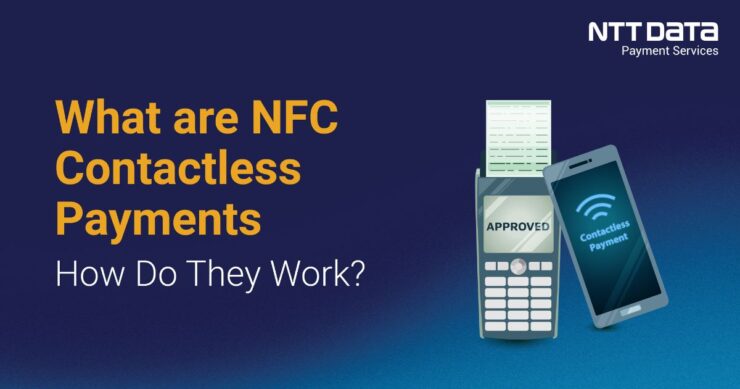
Table of Contents
NFC contactless payments have taken the retail world by storm, becoming the preferred way for millions of customers to pay for their purchases every day. Let’s understand the NFC contactless payments in detail, along with it’s working.
Understanding NFC Contactless Payments in Detail
NFC contactless payments have seen massive growth in adoption in recent years and are quickly becoming the preferred way to pay by millions of customers globally. NFC provides an extremely fast and convenient experience at checkout compared to traditional card swiping.
Major retailers and brands have also invested heavily in upgrading their payment terminals to support this cutting-edge technology.
What are NFC Contactless payments?
NFC contactless payment is a digital payment method that uses Near Field Communication (NFC) technology. NFC allows contactless transactions to be made through smartphones and smartwatches by tapping or holding them near an NFC payment terminal.
Customers can securely pay for purchases with a simple tap without inserting or swiping their cards, providing a faster and more convenient way to pay while shopping.
Recent Web Stories
Working of NFC contactless payments
Let’s explore the workings of NFC contactless payments in detail.
- When customers want to make an NFC payment, they open their mobile wallet on their NFC-enabled smartphone and tap it to the NFC payment terminal.
- The customer’s phone and the payment terminal detect each other using Near Field Communication (NFC) technology. NFC allows devices to establish radio communication by bringing them together within 4 cm.
- Once detected, the phones and terminal exchange data wirelessly via NFC radio signals. Payment credentials like tokenised card details stored in the mobile wallet are automatically pulled.
- Advanced encryption happens during the data exchange using technology like EMV to ensure security. The actual credit/debit card numbers are never shared. Only digital tokens unique to each transaction are used.
- These tokens and other transaction data are sent securely to the customer’s bank and the merchant’s bank for verification and processing.
- The payment is approved if verification passes within seconds and a confirmation is displayed on both devices. The merchant can now release the product/service to the customer.
- The whole tap-and-pay process takes 2-3 seconds to complete, providing a faster checkout experience than traditional card swiping.
- NFC contactless limits are set by banks without a PIN for added security.
Advantages of NFC Contactless Payments
Here are the top 5 advantages of NFC contactless payments.
1. Speed and Convenience:
One of the biggest advantages of NFC contactless payments is speed and convenience. With a simple tap, customers can complete transactions within seconds without waiting in long queues to swipe or insert their cards. This fast checkout experience improves customer satisfaction.
2. Improved User Experience (UX):
Contactless payments enhance the user experience at retail stores. Customers don’t have to fumble for their wallets or cards. They need to hold their smartphone or smartwatch near the payment terminal. This seamless UX, where payment is embedded into the checkout flow, makes for a frictionless shopping journey.
3. Data Analytics:
Every NFC transaction generates detailed data insights like item-level purchase data, frequency of visits, average spending habits, etc. This payment data can help retailers perform more targeted marketing, send customised offers, and better understand customer purchase behaviour. This leads to improved merchandising and promotion strategies.
4. Scalability:
NFC infrastructure has wide scalability. As more devices and payment terminals add NFC capability, contactless payments can be accepted at almost any retail location. This means customers have a consistent experience across shops and brands. It also drives higher adoption rates.
5. Rewards and Loyalty:
Users don’t miss out on any rewards or loyalty points when they pay via their digital wallets linked to credit/debit cards. They continue to earn rewards on every transaction. This encourages customers to choose contactless payments over cash.
Secure Your Seamless Payments with NTT DATA Payment Services
NFC contactless payments have made transactions faster, safer and more convenient for customers globally. As a leading payment gateway and technology solutions provider, NTT DATA Payment Services is at the forefront of driving this evolution.
NTT DATA Payment Services offers a complete payment solution to advance both your offline and online businesses from,
- Online Payment Gateway in India
- POS machines
- IVR payments
- Mobile applications, and
- Bharat QR Scan and Pay
We ensure maximum comfort, convenience, and safety for all your payments.
Future of NFC contactless payments
NFC contactless payments have revolutionised modern-day retail by making transactions significantly faster, safer, and more convenient than traditional card swiping. As merchants and consumers increasingly adopt contactless payments going forward, they will likely become the default way of paying at stores.
Going forward, we can expect the reach of NFC to increase further as more banks issue contactless cards and newer smartphones come pre-equipped with NFC as standard.
| Also, you can get frequent updates on nttdatapayments Instagram page. |
NFC Contactless Payments: FAQs
1. What is NFC?
NFC or Near Field Communication, is a wireless technology standard that allows short-range communications between devices like smartphones and payment terminals.
2. How do NFC contactless payments work?
NFC contactless payments work by tapping an NFC-enabled smartphone or card against a payment terminal. The devices wirelessly exchange encrypted payment details, which are then processed by the bank.
3. What are the advantages of NFC payments?
Key advantages include speed, convenience, user experience and the ability to still earn rewards.
4. Are NFC payments safe and secure?
Yes, NFC contactless payments are highly secure. Strong encryption is used, and actual card details are never shared. Instead, unique digital tokens are used for each transaction.
5. Which devices support NFC payments?
Most recent Android & iOS smartphones and smartwatches from brands like Apple, Samsung, Google, etc. come with NFC as standard. Additionally, many payment cards now have contactless capabilities.







